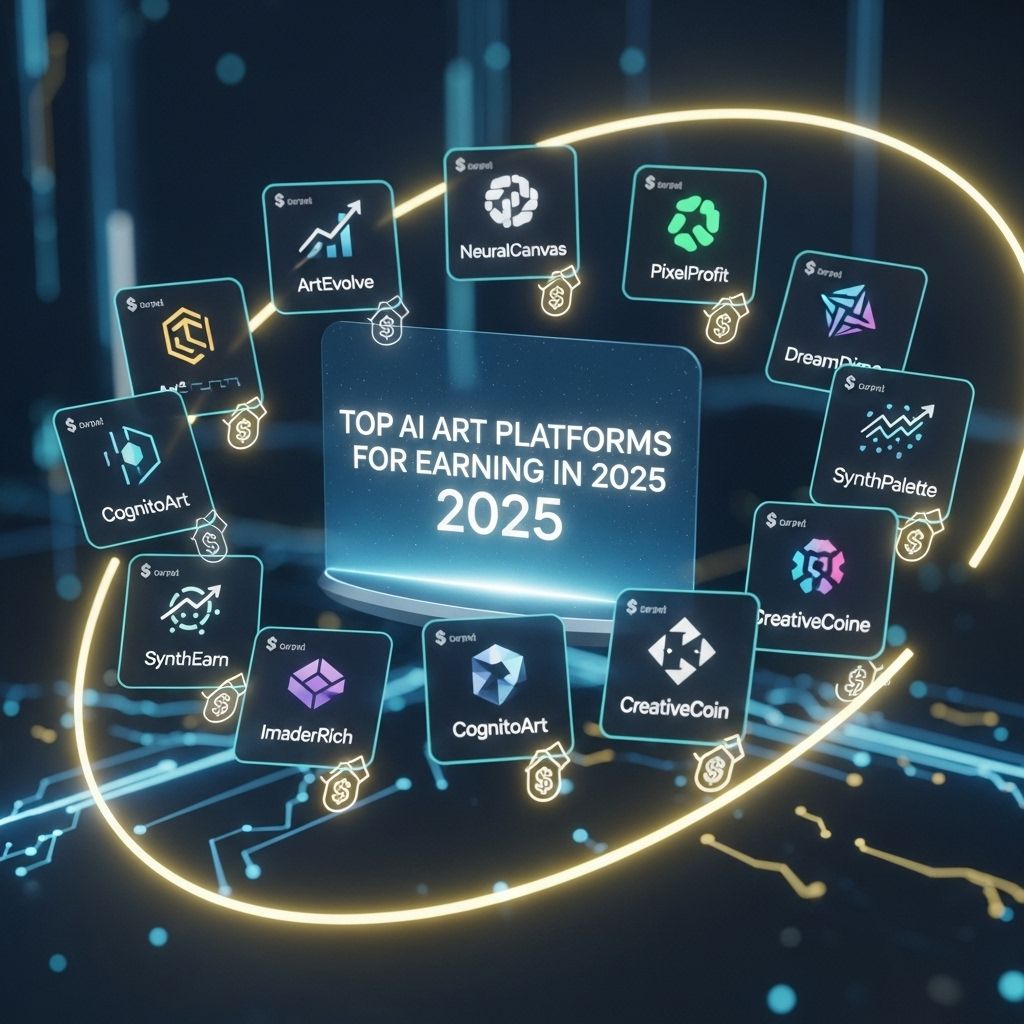As the art world continues to evolve, the intersection of technology and creativity has given rise to exciting opportunities for artists. The emergence of artificial intelligence (AI) in art creation has unlocked new avenues for expression and revenue generation. By 2025, AI art platforms are poised to become a significant part of the creative economy, enabling artists to monetize their skills in innovative ways. In this article, we will explore the leading AI art platforms that are shaping the future of creative work and offer insights into how artists can maximize their earnings through these digital tools.
Table of Contents
The Rise of AI in Art
The integration of AI into the art creation process has transformed traditional methods, providing artists with advanced tools for generating unique pieces. With algorithms capable of learning and replicating styles, artists can produce work that challenges conventional boundaries. Here are some reasons why AI art is gaining popularity:
- Enhanced Creativity: AI tools enable artists to explore new styles and techniques, often resulting in unexpected and unique outcomes.
- Efficiency: AI can automate repetitive tasks, allowing artists to focus on the creative aspects of their work.
- Accessibility: These platforms democratize art creation, making it easier for non-artists to experiment with artistic expression.
Key Features to Look for in AI Art Platforms
When choosing an AI art platform, artists should consider several critical features that can influence their creative process and potential earnings:
1. User-Friendly Interface
A platform should be intuitive, allowing users to focus on creativity rather than navigating complex tools.
2. Customization Options
Good platforms offer a range of styles and settings for artists to tailor their output according to vision.
3. Community Support
Active communities provide feedback, sharing, and collaboration opportunities, which can enhance the creative experience.
4. Monetization Features
Options for selling artwork directly or through integrated marketplaces are essential for artists looking to earn.
Top AI Art Platforms for 2025
Here are some of the best AI art platforms that are expected to lead the market in 2025, offering unique tools and opportunities for artists:
1. DeepArt.io
DeepArt uses deep learning algorithms to transform photos into artworks resembling famous styles. Artists can upload their images and select a style to apply.
Key Features:
- Supports various art styles from classic to modern.
- High-resolution outputs for print and sale.
- Simple user interface.
2. Daz 3D
Daz 3D offers a platform for creating 3D art with AI assistance. It provides tools for character creation, animation, and rendering.
Key Features:
- Extensive library of assets for customization.
- Support for rendering in high quality.
- Marketplace for selling 3D assets.
3. Artbreeder
Artbreeder allows users to blend images and generate new artworks collaboratively. The platform promotes community interaction, fostering creativity.
Key Features:
- Ability to manipulate images by adjusting ‘genes.’
- Community features for sharing and remixing art.
- Potential for creating unique NFTs.
4. Runway ML
Runway ML is a creative toolkit for artists and designers, providing AI-powered tools for video, image, and text generation.
Key Features:
- Real-time collaboration features.
- Integration with popular creative software.
- Tools for creating interactive media.
5. OpenAI’s DALL-E
DALL-E is an advanced AI model that generates images from textual descriptions, allowing artists to create visuals based solely on their ideas.
Key Features:
- Highly customizable outputs based on user prompts.
- Ability to generate variations on a theme.
- Potential for commercial use of generated art.
Strategies for Maximizing Earnings
As artists embrace AI art platforms, here are some strategies to consider for maximizing earnings:
1. Leveraging Social Media
Promote your work on platforms like Instagram, Twitter, and TikTok to reach a broader audience. Engaging with followers can lead to potential sales and collaborations.
2. Setting Up an Online Store
Using platforms like Etsy or a personal website can facilitate the sale of AI-generated art. Ensure to market your art effectively to attract buyers.
3. Exploring NFT Markets
Consider minting your AI art as non-fungible tokens (NFTs) on blockchain platforms. NFTs can provide a unique revenue stream and connect artists with collectors interested in digital art.
4. Collaborating with Other Artists
Network with fellow artists to create joint projects or exhibitions. Collaboration can expand your audience and lead to new opportunities.
Conclusion
As we move towards 2025, AI art platforms are destined to reshape the creative landscape, providing artists with tools to innovate and generate income. By selecting the right platform and employing strategic marketing techniques, artists can maximize their potential in this rapidly evolving field. The future of art is digital, and embracing AI is a step towards thriving in this new era.
FAQ
What are the best AI art platforms to earn money in 2025?
Some of the top AI art platforms expected to gain popularity in 2025 include Artbreeder, DeepArt, and Runway ML, which offer unique features for artists to monetize their creations.
How can I monetize my AI art on these platforms?
You can monetize your AI art by selling prints, digital downloads, or licensing your artwork for commercial use through these platforms.
Are there any fees associated with selling AI art on these platforms?
Most platforms charge a commission or listing fee for sales, so it’s important to review each platform’s terms before uploading your work.
Can I use AI art for commercial purposes?
Yes, many AI art platforms allow you to use your creations for commercial purposes, but always check the licensing agreements to ensure compliance.
What skills do I need to create AI art?
While basic artistic skills can be helpful, familiarity with AI tools and software is more crucial for creating compelling AI-generated art.
Will AI art platforms still be relevant in 2025?
Yes, with the continuous advancements in AI technology and increasing interest in digital art, these platforms are likely to remain relevant and evolve with new features.

